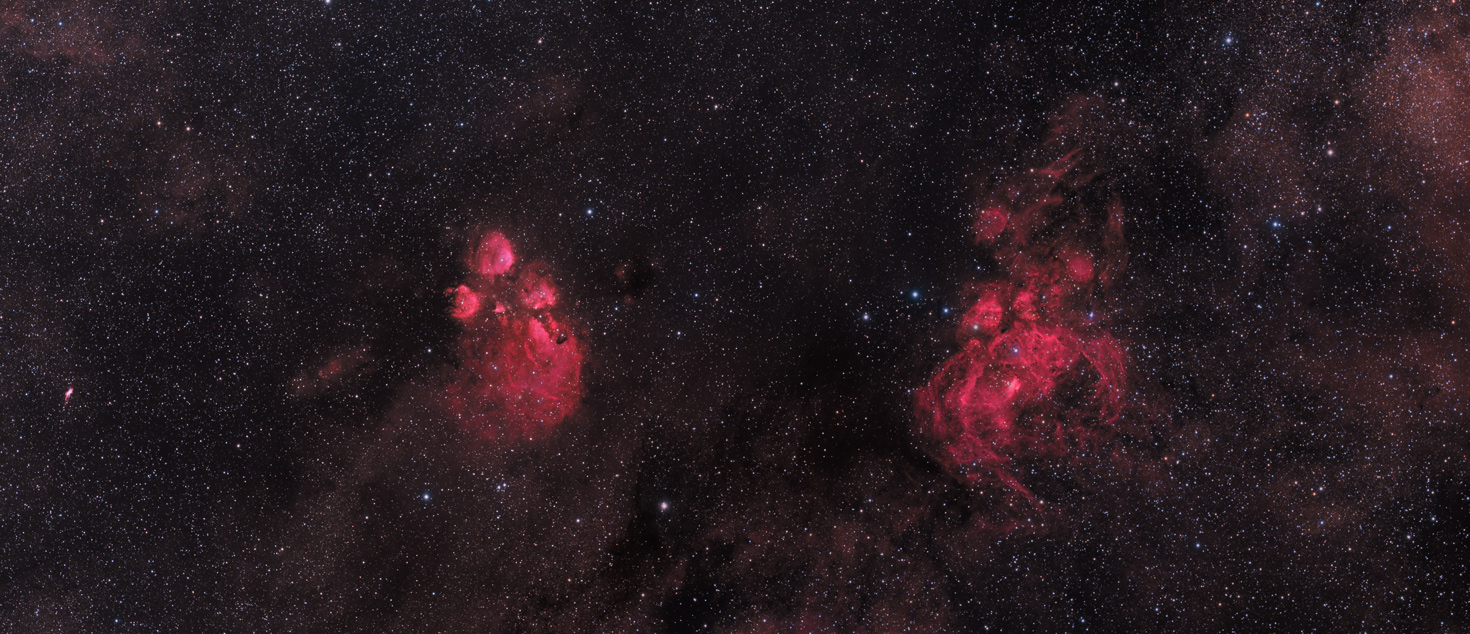
Cat's Paw Nebula and Lobster Nebula Region: The two large objects in this field are NGC6334, the Cat's Paw Nebula (on the left) and NGC6357, the Lobster Nebula on the right. Both of these are large star-forming regions; the Cat's Paw Nebula is noted for the extreme rate of star formation taking place there, and NGC6357 has some of the most massive stars in our galaxy. The Cat's Paw Nebula is approximately 5,500 light years from us, about 50 light years across. For scale, it appears slightly larger than a full moon. The Lobster Nebula is about 8,000 light years from us, and about 400 light years across (including all the faint stuff). The difference in colors is a result of the significantly greater distance the Lobster Nebula is from us; both nebulae are so reddish (as opposed to having some component of blue and green), because they both lie along our galactic plane, and the interstellar dust attenuates blue and green much more than it does red. The bright streak on the far left is NGC6302; a slightly more detailied image of this is "here."
Copyright 2013 Mark de Regt